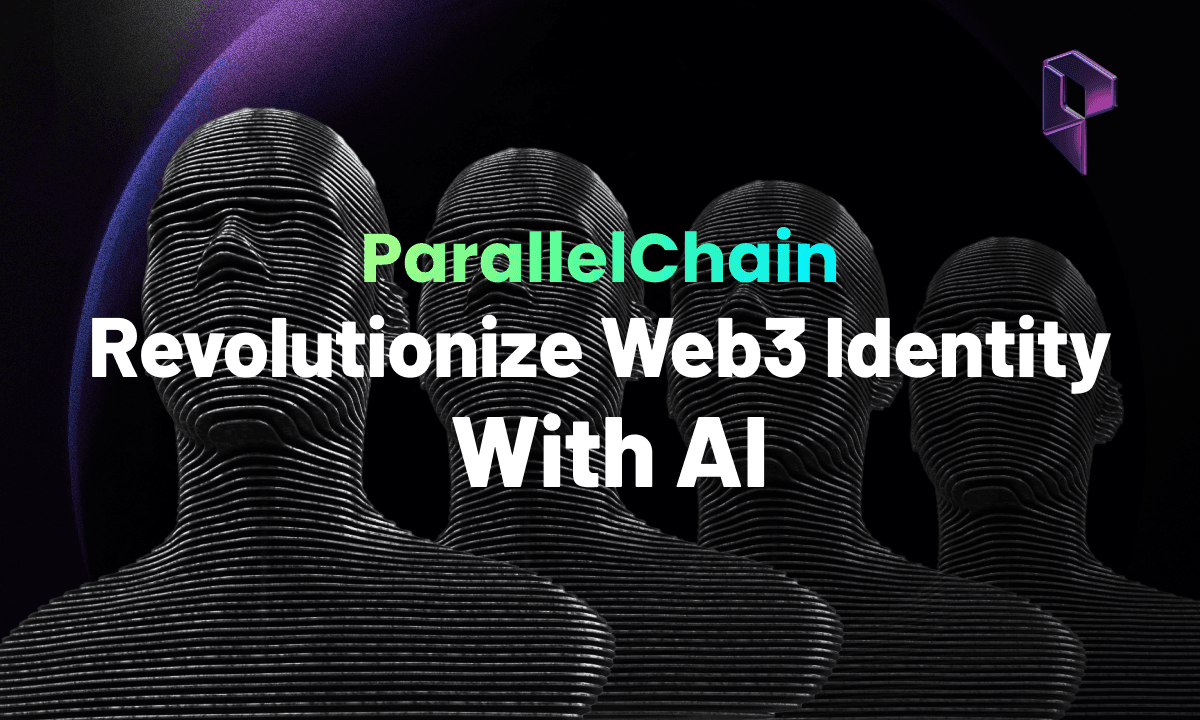
The web3 and blockchain space is buzzing with development, yet, we still see a big gap: the user experience. Despite the explosion of dapps, their true potential remains untapped if everyday individuals find them too complex or out of reach.
Take a cue from Apple, which owes their success to providing users a singular, simple access point to diverse applications, we are reminded of a crucial principle: innovation flourishes when it’s accessible to all. However, the current blockchain space presents a stark contrast, its rich diversity ironically leaves users entangled in a complex web of identities, managing different accounts and seed phrases across platforms. Furthermore, with on-chain and off-chain (web2) identities remaining distinctly separated, the web is further scattered. This has been a persistent issue even within web2 due to identity systems being centralized and privately managed by companies.
Now, picture a different reality—one where our identity is universally recognized, whether we are logging into a traditional banking website, verifying our age eligibility on Uniswap, or interacting with a decentralized social media platform on any chain.
If this vision strikes a chord with you, let’s talk about ParallelChain.
ParallelChain is a proof of stake blockchain developed by the Singapore-based tech powerhouse ParallelChain Lab, known for their ground-breaking work in artificial intelligence (AI) and know-your-customer (KYC) enterprise solutions, the team recently made waves with their revolutionary voice-based age classification AI for Singapore’s personal data protection authority. ParallelChain’s recently unveiled roadmap and whitepaper articulate a clear vision: to unify the fragmented multi-chain user experience with an AI-powered identity system that traverses across diverse platforms.
It’s not about adding another blockchain to the mix; it’s about advancing the ecosystem with a community-based approach to identity.
Digital identity is not unchartered territory, with projects like Polygon ID already on the map. However, these projects rely heavily on having external entities to issue and validate credentials, which inadvertently reintroduces centralisation into the system, leading to bottlenecks, single points of failure, and abuse of power. ParallelChain mitigates this risk by leveraging AI and a set of open standards to govern identity properties, placing accountability on technological solutions and a community-driven identity framework. Furthermore, ParallelChain simplifies the developer experience with integrated tools and opens doors to business and individual users with on-demand access via web-based and mobile applications.
Let’s have a look at some key aspects of the project.
AI at the Helm
Central to this system is the integration of cutting-edge AI underpinning the identity lifecycle on ParallelChain – from creation and verification to self-sovereign management. A standout AI model is a state-of-the-art passive face anti-spoofing system which eliminates the need for intrusive or cumbersome user actions typically associated with identity checks, far surpassing what competitors offer in terms of security, speed, and user-friendliness.
Moreover, ParallelChain employs Edge AI to redefine and streamline how users interact with decentralized platforms. By processing data directly on the device, it speeds up transactions while enhancing data security, keeping user information safe from central vulnerabilities.
Navigating the Regulatory Waters
The crypto world has long wrestled with regulatory uncertainties, especially within DeFi applications expected to face regulatory glare first. The question stands: How can dapps comply without betraying decentralisation’s core values—user control and censorship resistance? ParallelChain’s suite of compliance tools offers a resolution, enabling dapps to uphold KYC and data protection norms without centralizing control or data. Leveraging cryptographic solutions like zero-knowledge proofs (ZKP), users can validate their identity for regulatory purposes without compromising privacy.
A New Data Economy
But why stop at privacy and compliance? ParallelChain introduces a user-owned data economy as a core component of its identity system, a revolutionary shift from the current data monetisation paradigms where user data is exploited for profit by big corporations.
ParallelChain is flipping the script with identity tokenisation, where users are not mere data sources, but owners of portable data assets. In this user-centric data “marketplace”, we can choose to share specific pieces of data in exchange for rewards or services, whether it is contributing to a research project or personalizing our user experience. The team behind ParallelChain is gearing up for some exciting experiments with the community, as this implementation requires sophisticated technical groundwork and well-designed PRFC (ParallelChain Request for Comments) token standards with meticulously thought-out properties that consider the multifaceted nature of our digital selves, serving as the blueprint for identity transactions.
Bridging Digital Divides
True digital evolution demands more than isolated progress; it requires interconnectedness. ParallelChain addresses this by laying the groundwork for digital identities and credentials that seamlessly traverse between disparate systems. This isn’t just about creating a universal digital identity; it’s about establishing a fluid and secure ecosystem that users can navigate with ease, regardless of the platform or network they choose to engage with. To achieve this monumental task, ParallelChain leverages the dual powers of bridges and oracles. While bridges serve to facilitate the recognition of the ZKP-based verified credentials on ParallelChain, allowing users to maintain the validity of their credentials on different platforms without re-verification; oracles serve as the link between on-chain and off-chain systems by relaying vital information, they ensure that the identities on ParallelChain are applicable and valuable in the broader digital arena beyond web3.
For those intrigued by the potential and philosophy behind ParallelChain, dive into the whitepaper at http://parallelchain.io/learn/roadmap. There, you will find not just the technical intricacies but the ethos and vision that drive every line of code and strategic decision.
Social media links
Follow ParallelChain across its social media channels:
X | Telegram | LinkedIn | Discord | Github
- SEO Powered Content & PR Distribution. Get Amplified Today.
- PlatoData.Network Vertical Generative Ai. Empower Yourself. Access Here.
- PlatoAiStream. Web3 Intelligence. Knowledge Amplified. Access Here.
- PlatoESG. Carbon, CleanTech, Energy, Environment, Solar, Waste Management. Access Here.
- PlatoHealth. Biotech and Clinical Trials Intelligence. Access Here.
- Source: https://www.coinbureau.com/press-release/parallelchain-ai-web3-identity/
- :has
- :is
- :not
- :where
- $UP
- 6
- a
- About
- abuse
- access
- accessible
- accountability
- Accounts
- Achieve
- across
- actions
- adding
- addresses
- advancing
- age
- AI
- AI-powered
- All
- Allowing
- already
- an
- and
- Another
- any
- Apple
- applicable
- applications
- approach
- ARE
- Arena
- articulate
- artificial
- artificial intelligence
- Artificial intelligence (AI)
- AS
- aspects
- Assets
- associated
- At
- authority
- Banking
- been
- behind
- being
- between
- Beyond
- Big
- blockchain
- Blockchain space
- blueprint
- bottlenecks
- bridges
- broader
- business
- but
- Buzzing
- by
- CAN
- Censorship
- Censorship Resistance
- central
- centralized
- centralizing
- chain
- channels
- Checks
- Choose
- classification
- clear
- code
- CoinBureau
- comments
- community
- Community Driven
- Community-based
- Companies
- competitors
- complex
- compliance
- comply
- component
- compromising
- Consider
- contrast
- contributing
- control
- Core
- Corporations
- Creating
- creation
- Credentials
- crucial
- crypto
- cryptographic
- cumbersome
- Current
- cutting-edge
- DApps
- data
- data protection
- data security
- decentralisation
- decentralized
- Decentralized Social
- decision
- DeFi
- demands
- Despite
- developed
- Developer
- Development
- device
- different
- digital
- digital identity
- directly
- disparate
- distinctly
- dive
- diverse
- Diversity
- doors
- drive
- dual
- due
- ease
- economy
- ecosystem
- Edge
- eligibility
- eliminates
- employs
- enabling
- engage
- enhancing
- ensure
- Enterprise
- Enterprise Solutions
- entities
- especially
- establishing
- Ethos
- Even
- Every
- everyday
- evolution
- exchange
- exciting
- expected
- experience
- experiments
- exploited
- explosion
- external
- Face
- facilitate
- Failure
- far
- Find
- First
- flipping
- fluid
- For
- fragmented
- Framework
- from
- further
- Furthermore
- gap
- gearing
- govern
- ground-breaking
- groundwork
- Have
- having
- heavily
- How
- However
- http
- HTTPS
- ID
- identities
- Identity
- if
- implementation
- in
- inadvertently
- individual
- individuals
- information
- Innovation
- integrated
- integration
- Intelligence
- interact
- interacting
- into
- intricacies
- Introduces
- intrusive
- Ironically
- isolated
- issue
- IT
- ITS
- just
- keeping
- Key
- known
- KYC
- lab
- laying
- leading
- leaves
- let
- leverages
- leveraging
- lifecycle
- like
- Line
- LINK
- logging
- Long
- Look
- made
- maintain
- managed
- management
- managing
- map
- Media
- mere
- meticulously
- mix
- Mobile
- Mobile Applications
- model
- monetisation
- monumental
- more
- multi-chain
- multifaceted
- Nature
- Navigate
- Need
- network
- New
- norms
- of
- offer
- Offers
- on
- On-Chain
- On-Demand
- open
- opens
- or
- Oracles
- our
- out
- owners
- paradigms
- passive
- personal
- personal data
- philosophy
- phrases
- picture
- pieces
- placing
- platform
- Platforms
- plato
- Plato Data Intelligence
- PlatoData
- Point
- points
- Polygon
- portable
- potential
- power
- powerhouse
- powers
- presents
- principle
- privacy
- processing
- Profit
- Progress
- project
- projects
- proof
- Proof-of-Stake
- proofs
- properties
- protection
- providing
- purposes
- question
- reach
- recently
- recognition
- recognized
- redefine
- Regardless
- regulatory
- rely
- remaining
- remains
- request
- requires
- research
- Resistance
- Resolution
- revolutionary
- revolutionize
- Rewards
- Rich
- Risk
- s
- safe
- scattered
- script
- seamlessly
- secure
- security
- see
- seed
- serve
- Services
- serving
- set
- Share
- shift
- Simple
- simplifies
- Singapore’s
- single
- singular
- Social
- social media
- Solutions
- some
- sophisticated
- Sources
- Space
- specific
- speed
- speeds
- stake
- standards
- standout
- stands
- stark
- state-of-the-art
- Still
- Stop
- Strategic
- streamline
- Strikes
- success
- suite
- surpassing
- system
- Systems
- Talk
- Task
- team
- tech
- Technical
- technological
- terms
- terms of security
- territory
- than
- that
- The
- their
- Them
- There.
- These
- they
- this
- those
- to
- token
- tokenisation
- too
- tools
- traditional
- traditional banking
- Transactions
- traverse
- true
- typically
- uncertainties
- underpinning
- Uniswap
- Universal
- universally
- untapped
- Uphold
- User
- User Experience
- user-centric
- users
- VALIDATE
- Valuable
- Verification
- verified
- verifying
- via
- vision
- vital
- Vulnerabilities
- waves
- we
- web
- web-based
- Web2
- Web3
- Website
- What
- when
- whether
- which
- while
- Whitepaper
- why
- will
- with
- within
- without
- Work
- world
- yet
- you
- zephyrnet
- zero-knowledge
- zero-knowledge proofs












